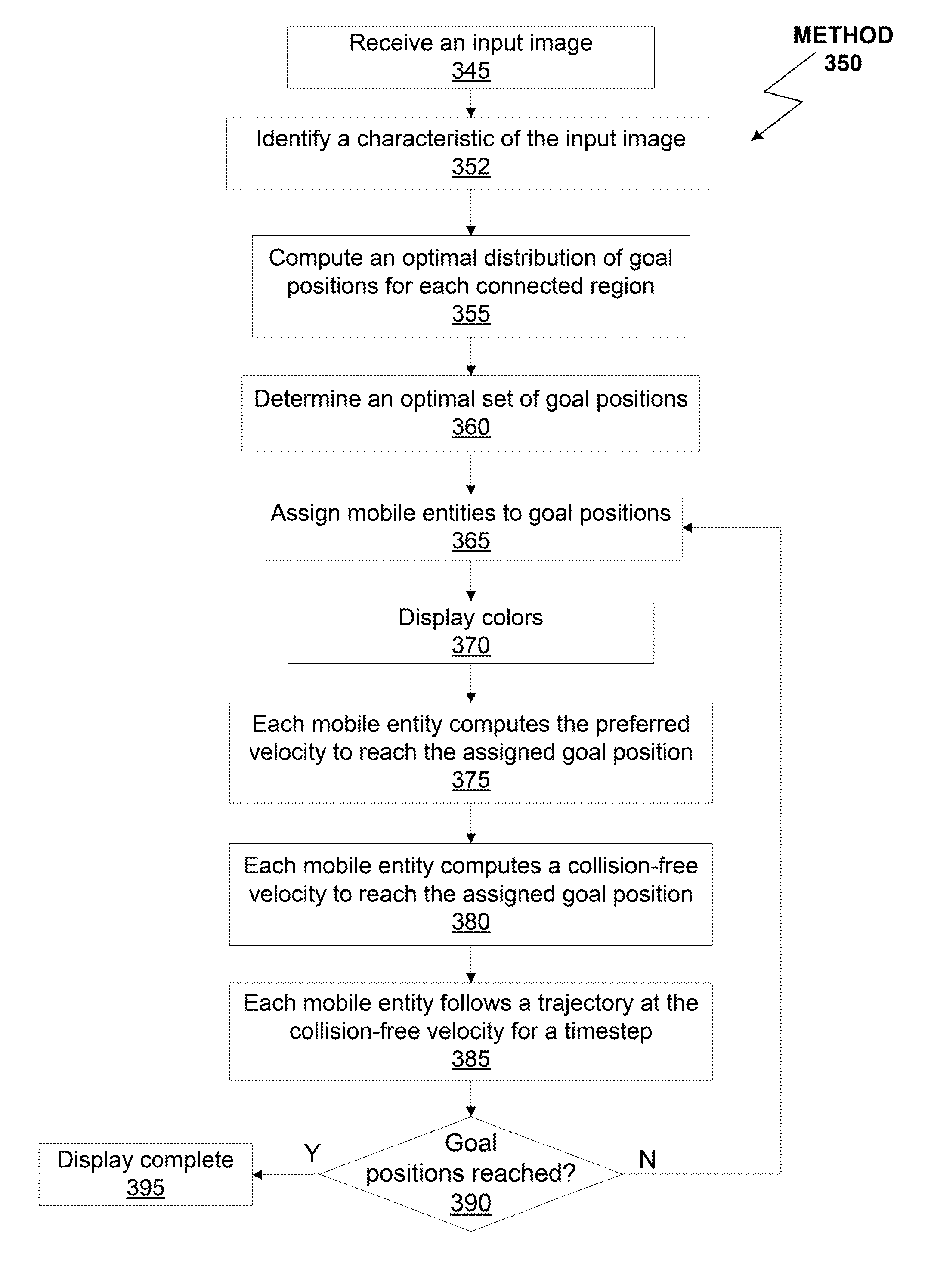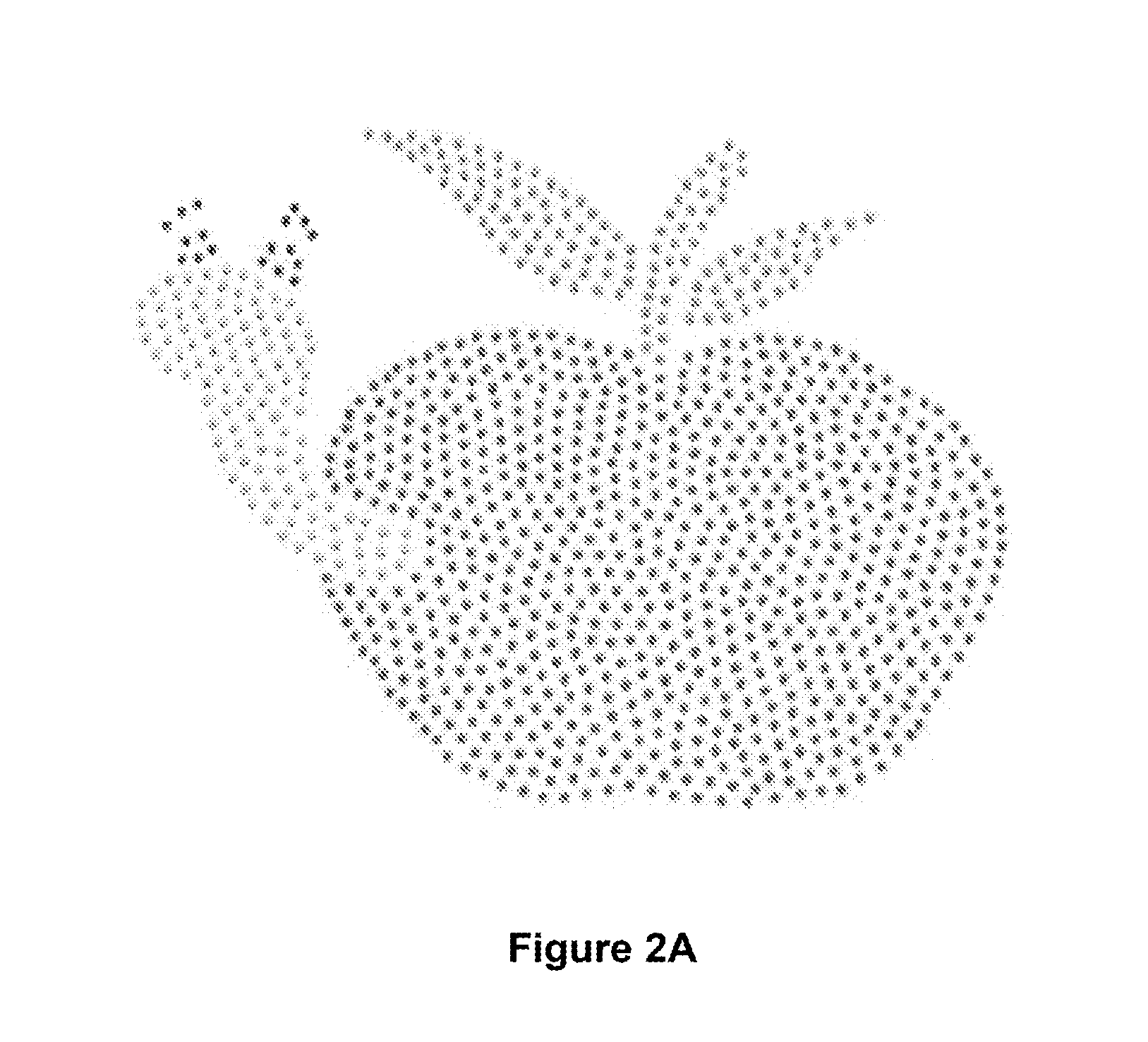Robotic texture
a robot and texture technology, applied in the field of robots and visual displays, can solve the problem that the existing control methods of a set of mobile robots do not address the problem
- Summary
- Abstract
- Description
- Claims
- Application Information
AI Technical Summary
Problems solved by technology
Method used
Image
Examples
Embodiment Construction
[0021]Embodiments of the invention include a system for reciprocal collision avoidance for multiple non-holonomic robots and choreographic multi-agent pattern formation. One embodiment of the present invention sets forth a method for controlling multiple non-holonomic robotic elements. The method comprises the steps of increasing a radius associated with each non-holonomic robotic element by a respective maximum tracking error value with respect to a trajectory of a holonomic robotic element to generate a set of modified radii and generating a set of collision-free velocities based on the set of modified radii, a first set of allowed holonomic velocities for each robotic element of multiple holonomic robotic elements, and a second set of collision-free velocities for each robotic element of the multiple holonomic robotic elements relative to neighboring robotic elements of the multiple holonomic robotic elements, where each robotic element of the multiple holonomic robotic elements ...
PUM
 Login to View More
Login to View More Abstract
Description
Claims
Application Information
 Login to View More
Login to View More - R&D
- Intellectual Property
- Life Sciences
- Materials
- Tech Scout
- Unparalleled Data Quality
- Higher Quality Content
- 60% Fewer Hallucinations
Browse by: Latest US Patents, China's latest patents, Technical Efficacy Thesaurus, Application Domain, Technology Topic, Popular Technical Reports.
© 2025 PatSnap. All rights reserved.Legal|Privacy policy|Modern Slavery Act Transparency Statement|Sitemap|About US| Contact US: help@patsnap.com



